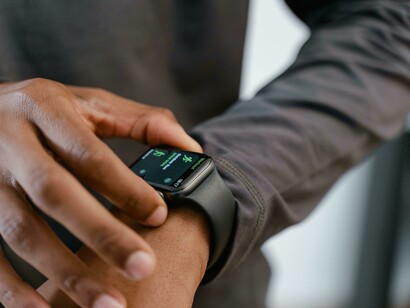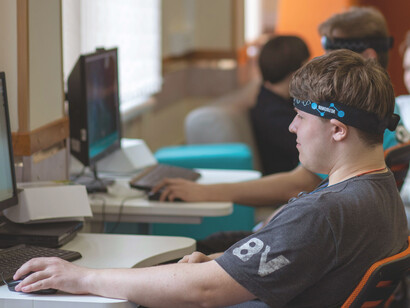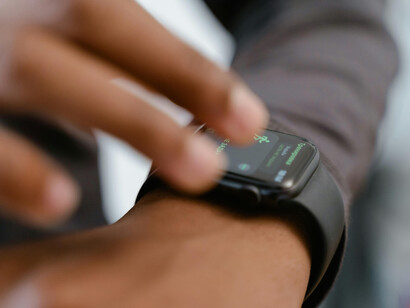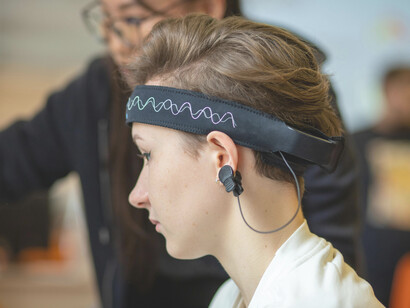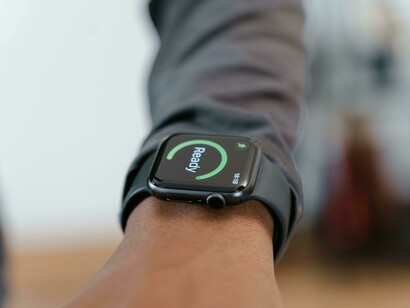In June 2025, something quietly but profoundly unsettling happened. A line was crossed—one that separates innovation from intrusion and thought from theft.
Apple’s Neural Keyboard, introduced as the showpiece of iOS 19, was supposed to be a leap into the future: a mind-controlled typing system that turned thoughts into text using brainwave signals picked up by AirPods Pro 3 and Apple Watch Ultra 2. But what began as a tech marvel quickly unraveled into a chilling privacy crisis. MIT researchers revealed they had successfully hacked the system—and what they found shook the foundations of digital security. Your thoughts, it turns out, might no longer be yours alone.
The team at MIT’s Digital Consciousness Lab used off-the-shelf tools and reverse-engineered code to prove they could reconstruct PINs, passwords, and even typed words with a staggering 94% accuracy—just by capturing neural signals. These weren’t abstract theories. This was real, and it worked. Within days, “MindLeak” and “MindPhish” kits appeared on the dark web, going for thousands of dollars. What once felt like the plot of a sci-fi film had suddenly landed in the real world—with all the danger that implies.
The fallout was immediate and global. Lawsuits began stacking up against Apple. Governments scrambled to draft emergency legislation. And ordinary users started asking the most uncomfortable question of all: if even our thoughts aren’t private, what is?
The Neural Keyboard itself was a technological wonder. It used non-invasive EEG sensors to detect brainwave patterns, translating them into words and commands. Apple assured users that everything was processed securely on-device, shielded by cutting-edge encryption—something they dubbed “NeuralHash.” For people with mobility issues, or anyone craving hands-free interaction, it was a glimpse into a more inclusive digital future. Apple even marketed it as “the end of typing.”
But privacy experts were wary from the beginning. Unlike a password, you can’t just change your brainwaves. And unlike a fingerprint, they don’t just confirm your identity—they reveal what’s happening in your mind. That kind of vulnerability, once exposed, can’t be undone.
MIT’s breakthrough was as terrifying as it was ingenious. Their AI model, trained on over 10,000 hours of brainwave data, could pick out the neural “fingerprints” of commonly used passwords and phrases. What hardware was used to capture this data? A modified Raspberry Pi, costing just $200. And it worked from up to three feet away—meaning a person sitting behind you on the subway could, in theory, steal your thoughts.
It didn’t take long for the criminal underground to seize the moment. “MindPhish” let hackers monitor thoughts in real time. “BrainKey” installed malware on iPhones to record neural activity. And “NeuroSpoof” could mimic someone’s brainwave signature, bypassing biometric security altogether. A leaked FBI memo confirmed that ransomware gangs were already experimenting with blackmail: “Pay up, or we publish what you’re thinking.”
Apple’s public reaction? Quiet. A subtle software update (iOS 19.2.1) disabled Neural Keyboard input for passwords—without announcement, explanation, or apology. Behind the scenes, however, it was clear they were scrambling. The company’s market value plummeted by $50 billion in just 48 hours, and the lawsuits started piling in.
Meanwhile, regulators weren’t waiting around. The European Union issued an emergency ban on all neural data collection until clear “neuro-rights” laws were in place. The U.S. FTC hit Apple with a lawsuit for failing to disclose the risks of neural data exposure. Human rights advocates called for “cognitive privacy” to be treated as a basic right—on par with medical confidentiality or physical property.
Legal scholars, too, found themselves in uncharted territory. Who owns your brainwave data? If someone steals your thoughts, is that identity theft? And what happens when employers begin tapping into these systems—not for access, but for control? Leaked internal documents from Amazon hinted at precisely that possibility: brain-computer interfaces to monitor worker attention and emotion in real time.
Apple, now facing a full-blown crisis, is reportedly racing to redesign the tech. “Neural Keyboard 2.0” is rumored to include ultrasonic jamming to block unauthorized neural eavesdropping, plus a new encryption protocol called “NeuroVault,” which adds random noise to outgoing signals. There are also whispers of a partnership with Neuralink—Elon Musk’s brain-implant venture—whose team now claims their invasive hardware is “more secure than Apple’s toy-level tech.”
The ripple effects are already being felt. Google paused development of its “Project MindY.” Meta has been dragged into Senate hearings over its brain-linked AR glasses. China announced the launch of a national “Brain Firewall”—a government-controlled encryption system for all neural interfaces.
And this may just be the beginning.
If neural hacking becomes mainstream, the consequences are staggering. Imagine being blackmailed with the threat of your most private thoughts being exposed. Imagine corporations siphoning off your ideas before you even voice them. Imagine living with the constant fear that your innermost self is no longer private—your secrets, dreams, and fears floating in someone else’s hands.
This isn’t just a story about cybersecurity. It’s about what it means to be human in a world where the boundary between mind and machine is fading fast. We’re not just dealing with data breaches anymore. We’re confronting the possibility that our thoughts—the raw, unspoken truths that make us who we are—can be harvested, sold, or stolen.
The Neural Keyboard hack may come to symbolize a broader awakening: that the rush to connect mind and machine has raced ahead of our ability to protect the very things that make us individuals. The big question now isn’t just “Can we build it?” It’s “Should we have?”
And maybe—just maybe—it’s already too late.



